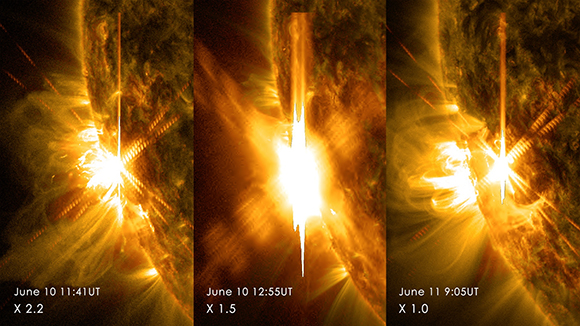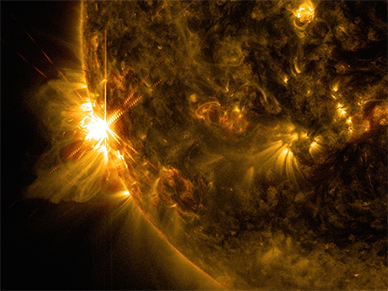NASA CAPTURES STUNNING X-CLASS SOLAR FLARES
By NASA.gov // June 12, 2014
images by nasa's Solar Dynamics Observatory
ABOVE VIDEO: The sun emitted significant solar flares on June 10, 2014, peaking at 7:42 a.m. and 8:52 a.m.

On June 11, 2014, the sun erupted with its third X-class flare in two days.

The flare was classified as an X1.0 and it peaked at 5:06 a.m. Images of the flare were captured by NASA’s Solar Dynamics Observatory.
All three flares originated from an active region on the sun that recently rotated into view over the left limb of the sun.
Solar flares are powerful bursts of radiation. Harmful radiation from a flare cannot pass through Earth’s atmosphere to physically affect humans on the ground.
However, when intense enough, they can disturb the atmosphere in the layer where GPS and communications signals travel.
This flare is classified as an X2.2 flare. X-class denotes the most intense flares, while the number provides more information about its strength.
An X2 is twice as intense as an X1, an X3 is three times as intense, etc.
To see how this event may affect Earth, please visit NOAA’s Space Weather Prediction Center at SpaceWeather.gov, the U.S. government’s official source for space weather forecasts, alerts, watches and warnings.












